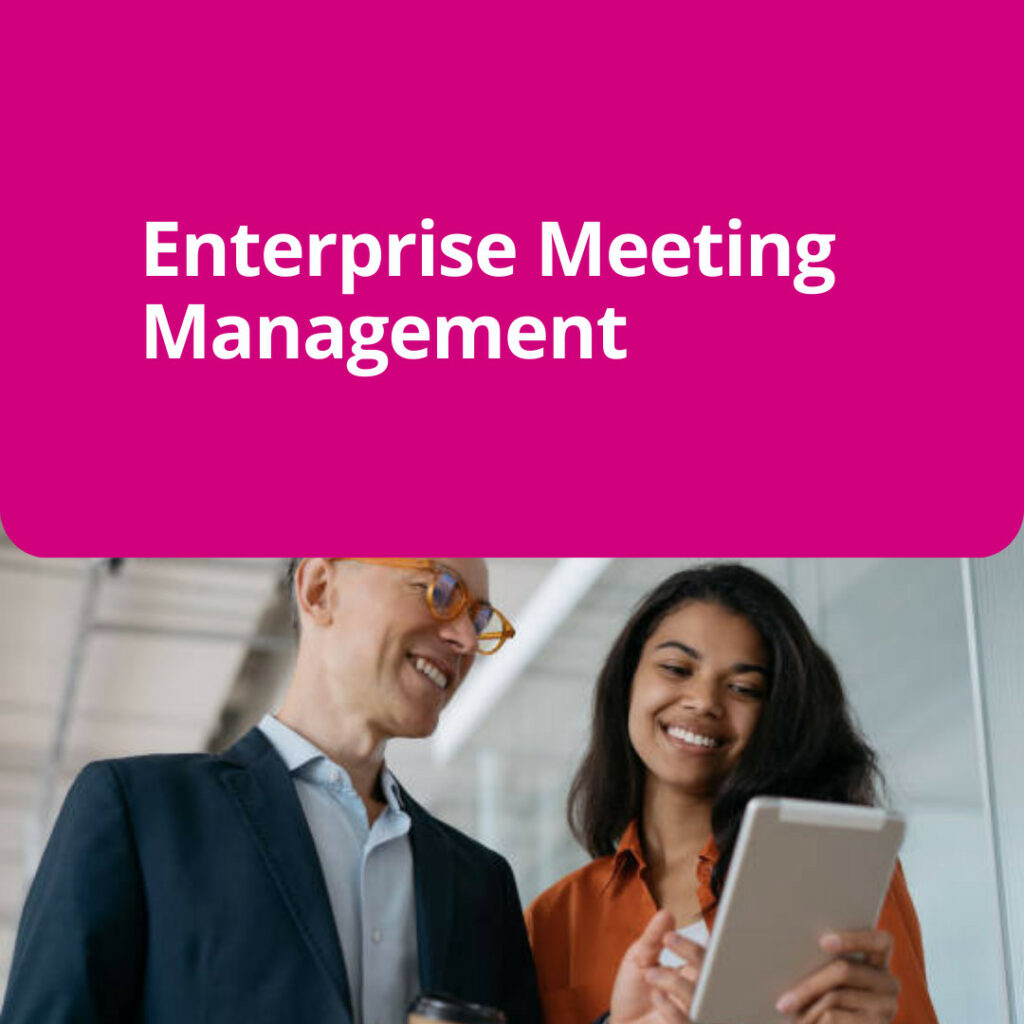In the modern era of rapidly evolving business landscapes, the importance of effective meetings cannot be understated. Meetings, whether virtual or in-person, are where decisions get made, strategies get formed, and teams come together to collaborate. However, with increasing participants, agendas, and objectives, the complexity of meetings also escalates. This is where Enterprise Meeting Management (EMM) comes into play.

The Rise of Enterprise Meeting Management
Historically, businesses often managed meetings haphazardly. The secretary would send an email, attendees would gather in a room, and discussions would happen. As organizations grew, however, this system became inefficient and often ineffective. With the rise of digital transformation, globalization, and remote work, the need for a structured approach to meetings has become essential.
Enter EMM, a comprehensive approach to managing all aspects of meetings in an organization. Think of it as an ERP for meetings. Forbes once discussed how the “age of the meeting” is upon us, stressing the importance of efficient meeting management.
Core Components of Enterprise Meeting Management (EMM)
Here are some of the crucial elements of an effective Enterprise Meeting Management system:
1) Scheduling and Calendaring: EMM solutions ensure that meetings are scheduled at convenient times for all participants, avoiding clashes and ensuring maximum attendance.
2) Agenda Management: Before a meeting begins, a clear agenda helps participants prepare. This module ensures that all discussion points are listed, prioritized, and allocated time.
3) Document Management: For meetings that require data or presentations, an integrated document management system ensures everyone has access to necessary files.
4) Action Items & Follow-ups: Post-meeting, action items are listed, assigned, and tracked to ensure follow-through.
5) Feedback and Evaluation: For continuous improvement, feedback is collected from participants about the meeting’s effectiveness, leading to more efficient future gatherings.
6) Cost Tracking: Especially for large enterprises, the financial aspect of meetings (venue booking, technology costs, refreshments) can be significant. EMM solutions track these costs for budgeting and ROI calculation.
7) Integration with other Enterprise Systems: Whether it’s your CRM, HRM, or any other system, a good EMM integrates seamlessly to pull or push relevant data.

The Challenges in Meeting Management
Despite its importance, several challenges can obstruct effective meeting management. Based on a Harvard Business Review study, here are some primary concerns:
- Too Many Meetings: Executives often complain about the sheer number of meetings they need to attend, leading to “meeting fatigue.”
- Lack of Clear Objectives: Meetings without a defined purpose or agenda often go astray, wasting valuable time.
- Technological Hiccups: Especially in the era of virtual meetings, technological challenges can disrupt or delay proceedings.
- Cost Overruns: Without effective cost management, meeting expenses can escalate unexpectedly.
- Post-meeting Follow-through: The most well-conducted meeting can be useless if action items aren’t pursued post-meeting.
Conclusion
Enterprise Meeting Management is no longer a luxury but a necessity for businesses that want to remain agile, collaborative, and effective. By harnessing the potential of solutions like Weezly, organizations can ensure that their meetings are not just routine gatherings, but powerhouses of collaboration, decision-making, and strategy formulation.





